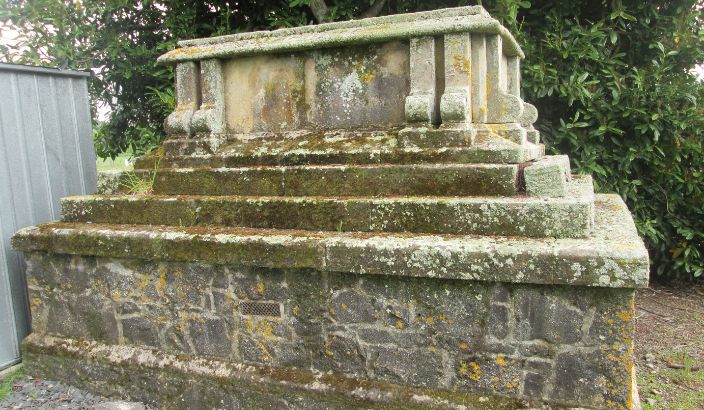A tragic end to the dream of a new life

Resting place of Constantine Dillon, St Michaels churchyard. Photo: Supplied.
Constantine Augustus Dillon, the fourth son of Henry Dillon, the 13th Viscount Dillon, became a prominent settler in the Waimeas but sadly died in 1853 due to drowning.
His background was that of a military man having served in both the Navy and Army, where he held his first commission in the 16th Lancers.
After arrival in Nelson by the ship George Fyfe, Dillion and his wife Fanny settled in Waimea West where a farm was established, and the property was named ‘Ditchley’. In later years it became known as ‘Enstone’. Shortly after arrival Dillon planted a willow tree on his property, from a twig, said to be secured from Napoleon’s grave at St Helena and carried to Nelson in a potato. In 1940 the tree was added to the list of historic trees in Nelson.
He was very active in the local settlement and around 1848 was approached to take up the role of Civil and Military Secretary to Governor Grey in Auckland. This he did but was not fond of Auckland so returned to Nelson around 1850 as Commissioner of Crown Lands. In 1851 he became a member of the Legislative Council as Collector of Customs. Dillon was known as an enterprising man and one who took an interest, not only in the settlement of Nelson but also of the whole country. After the New Zealand Company collapsed and left many settlers stranded with little means to provide for themselves, Dillon worked hard on their behalf to find some solutions.
On Saturday evening on 16 April 1853, Dillon, along with his young son and two other men, were returning to Nelson after inspecting his property at Waihopai and on reaching the Wairau River made a plan on how best to cross the river.
The three men were on horseback and the young lad was on a small pony. Dillon placed his son on his own horse to ensure they crossed the river safely and sent him across with Mr Morse. Dillon then attempted to ford the river on foot while leading the pony. In the attempt to cross the horse became uneasy and all were swept down the river into deep water. Dillon was lost from view, and his body was found two days later nearly two miles from where the accident happened.
His body was returned to Waimea where an inquest was held, finding the verdict to be accidental death by drowning. The funeral procession of around 50 mourners on foot and 60 on horseback left Nelson around 10.30am. The walkers went so far before returning to Nelson while those on horses continued and by the time the Waimea River was reached the number had increased to around 100 on horses and some in vehicles. The body was taken to St Michaels church where the service took place, and the following day was placed in a vault.
In June 1857, Fanny Dillon let the family home in Waimea West and sold the crops and farm animals. She then returned to England with her children, dying there in 1896.
